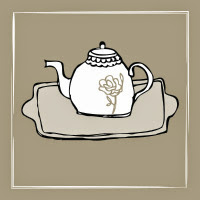If you are looking for the perfect teapot then look no further than the range of handmade teapots from Zero Japan ceramics.
Created by Koji Inoue, who was working at a Japanese porcelain manufacturer when he
first thought of creating his own range of teapots. He longed to express
his creativity; blending beautiful and functional design with rich
tradition. The idea grew so compelling, Koji quit his job one afternoon to pursue creating what is now known as Zero Japan.
In designing Zero Japan, Koji was driven by the Japanese pursuit of
balance. All elements of the teapot range work in harmony with each
other: the round shapes soften clear cut lines; the design combines
practicality with strong, smooth shapes and interesting
finishes—including a traditional Japanese style kikko crackle.
One of the most striking aspects to a Zero Japan teapot is its
stainless steel lid. While it looks beautiful, Koji actually designed it
to solve a problem for his mother, after she accidentally broke the lid
of her favourite teapot—it just slipped off and the porcelain
shattered. Upset, she asked to Koji to please find her a spare lid she
could use but he could not find one. In fact, Koji discovered that many
Japanese households had similar experiences, having no lid for beautiful
teapots as they often slipped and broke. Koji ended up buying his
mother a new teapot.
With this in mind, he started designing the durable, stainless steel
clip-on lid featured on all Zero Japan teapots. It allows the pot to be
easily used with one hand; as the lid is clipped on, it will not fall
off. Needless to say, Koji's mother was very happy!
With so many colours, finishes and shapes to choose from there is one to suit every style and personality. The spout of every Zero Japan teapot is created by hand, so each lip
pours a long, thin stream of steaming tea which falls precisely into
your cup. The attention to detail is such hand-checks
every pot. Koji knows that a beautiful looking teapot alone does not
make beautiful tasting tea—so he put a lot of effort and thought into
creating what lies under each lid.
A stainless steel infuser is suspended over the rim, which, after
your first cup, keeps the tea leaves clear of the water to prevent over
brewing, and ensures every cup of tea tastes as good as the first. This
is particularly useful when brewing Japanese or Chinese tea, which can
be used for several infusions. The filter cup is wide and deep, giving
the tea leaves enough room to fully unfold and release their flavour.
Tea is as much a ritual as it is a beverage and in cultures all over
the world it is a time to gather with special people and pause; to enjoy
each other’s company and tell each other stories. We invite you to
share your own story through your own
Zero Japan teapot.
We have a large range of Zero Japan teapots available in store or on our website:
http://www.theberryteashop.com.au/collections/teapots-and-tea-sets?page=3

























